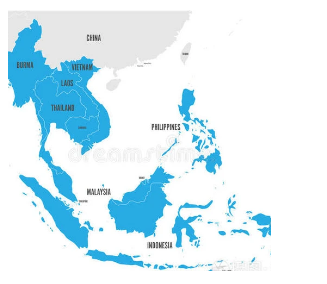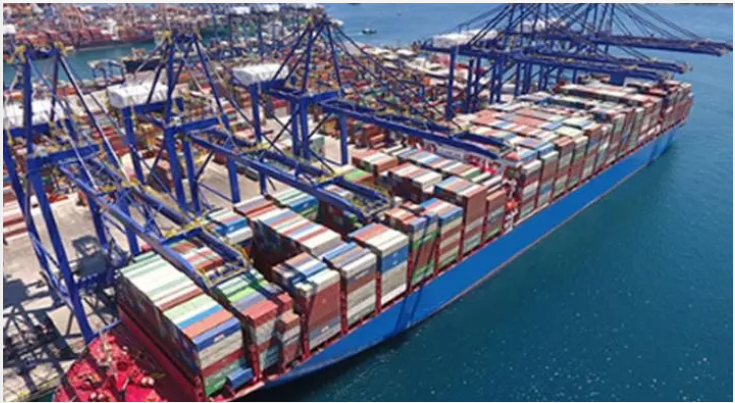Email cannot be empty
Password cannot be empty
Email format error
Email cannot be empty
Email already exists
6-20 characters(letters plus numbers only)
The password is inconsistent
Email format error
Email cannot be empty
Email does not exist
6-20 characters(letters plus numbers only)
The password is inconsistent



As we all know, ocean freight is the main mode of transportation in international logistics, and the two most common methods of ocean freight are full container load (FCL) and less than container load (LCL). So what are the differences between these two methods?
Full Container Load (FCL)
Ocean full container load transportation, also known as Full Container Load (FCL), refers to a batch of goods occupying the entire container for transportation. It generally requires a certain quantity of goods to use regular transportation methods. It is usually suitable for situations with large cargo volumes and single types of goods.
International ocean freight, double clearance tax to door
Less than Container Load (LCL)
Ocean less than container load transportation, also known as Less than Container Load (LCL), refers to the consolidation of goods from multiple customers in the same container for transportation, with the logistics company responsible for consolidation and loading. It is usually suitable for situations with small cargo volumes, multiple types of goods, and scattered goods.
Operation process of ocean full container load/less than container load
Operation process of full container load transportation
Full container load transportation refers to a batch of goods occupying the entire container for transportation. The operation steps of full container load transportation are as follows:
Booking: Customers need to book the container in advance and determine the type (20GP/20HQ/40HQ, etc.) and quantity of containers.
Loading: Goods arrive at the loading point for loading and sealing. Professional personnel from the logistics company handle the loading and sealing to ensure the safety of the goods.
Customs clearance: After loading, the logistics company completes the export customs clearance procedures.
Transportation: After customs clearance, the goods are transported, and the logistics company can provide door-to-door transportation services.
Arrival at port: The goods arrive at the destination port, and local customs clearance agents handle the customs clearance procedures.
Unloading: After completing the customs clearance procedures, the goods are unloaded from the container by the logistics company.
Distribution: After unloading, the goods are transported to the destination, and the logistics company handles the distribution.
Operation process of less than container load transportation
Less than container load transportation involves consolidating goods from multiple customers in the same container for transportation. The operation steps of less than container load transportation are as follows:
Determining the cargo loading plan: The logistics company determines the cargo loading plan based on the information provided by the customers, deciding on the type of container to use (such as 20-foot or 40-foot containers) and the loading method.
Loading: Goods arrive at the loading point for loading and sealing. Professional personnel from the logistics company handle the loading and sealing to ensure the safety of the goods.
Customs clearance: After loading, the logistics company completes the export customs clearance procedures.
Transportation: After customs clearance, the goods are transported, and the logistics company can provide door-to-door transportation services.
Arrival at port: The goods arrive at the destination port, and local customs clearance agents handle the customs clearance procedures.
Distribution: After completing the customs clearance procedures, the goods are transported to the destination, and the logistics company handles the distribution.
What is double clearance to door?
"Double clearance" refers to the series of processes of origin customs clearance + destination customs clearance; "to door" means delivery to the door. So, in simpler terms, "double clearance to door" means that the shipper entrusts the cargo to a freight forwarder, who is responsible for arranging trailers, customs clearance, loading, shipping or trucking; after arriving at the destination, the bill of lading, customs clearance, and delivery to the door are also arranged by the freight forwarder.
What are DDU and DDP?
DDU
DDU (Delivered Duty Unpaid): Delivery duty unpaid (specified destination) means that the seller delivers the goods to the specified destination in the importing country to the buyer without handling import procedures or unloading the goods from the transport vehicle, completing the delivery.
The seller should bear all expenses and risks until the goods reach the specified destination, excluding any "taxes" (including the responsibility and risk of customs procedures at the destination and payment of fees, duties, taxes, and other expenses required for customs procedures at the destination). The buyer must bear these "taxes" and the expenses and risks incurred due to their failure to timely handle the import customs clearance procedures.
DDP
DDP (Delivered Duty Paid): Delivery duty paid (specified destination) means that the seller delivers the goods to the specified location in the importing country, delivers the goods that have not been unloaded from the transport vehicle to the buyer, and the seller is responsible for handling import customs clearance procedures and paying any import "taxes" required at the destination.
The seller bears all expenses and risks until delivering the goods to the buyer. This term should not be used if the seller cannot directly or indirectly obtain an import license. DDP is the most responsible trade term for the seller.
The main difference between DDU and DDP lies in who bears the risks and costs during the customs clearance process at the destination port. If the exporter is capable of handling import customs clearance, DDP can be chosen. If the exporter is unable or unwilling to handle the necessary procedures, bear the risks and costs, then the term DDU should be used.